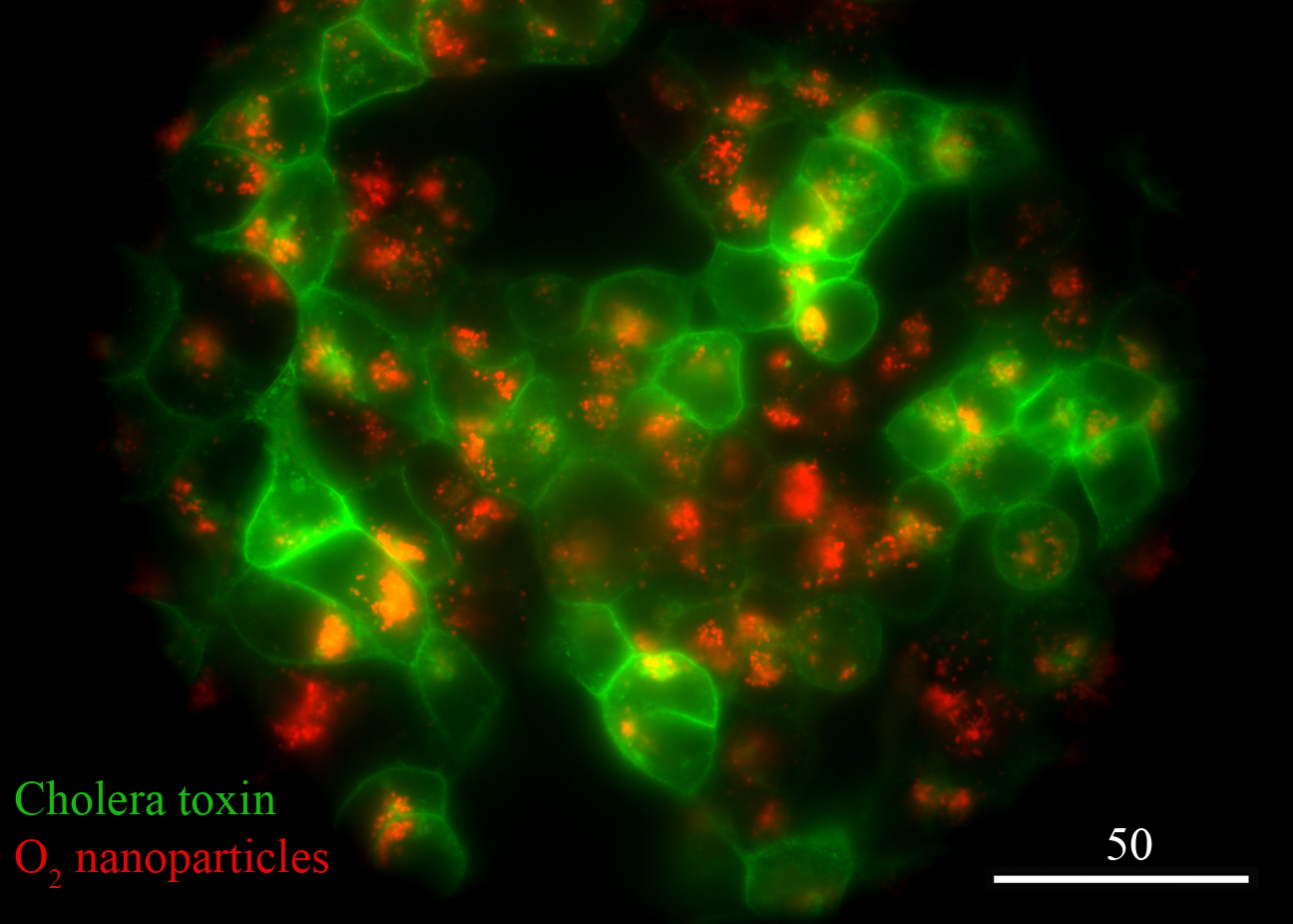New Article Published in ACS Nano

ABCRF PI's Prof Dmitri Papkovsky and Dr Ruslan Dmitriev have had their article entitled Versatile Conjugated Polymer Nanoparticles for High-Resolution O2 Imaging in Cells and 3D Tissue Models published in ACS Nano.
The fluorescent nanoparticles are a powerful imaging tool to study physiology at the level of live cells and tissues. They are bright, exceptionally photostable and compatible with multiple detection modes allowing for quantitative measurements. However, they are often tailored to particular cell model and their targeting to specific cell types represents a challenging task.
To address this, Dr. R. Dmitriev and Prof. D. Papkovsky from School of Biochemistry (ABCRF), and collaborators from Graz University of Technology (Austria), RCSI (Dublin) and Pirogov Russian State Medical University (Russia) introduced a new concept of copolymer nanoparticles for O2 sensing. These nanoparticles are based on two dyes (fluorescent antenna and phosphorescent porphyrin) with controlled FRET leading to improved (5-10 times) brightness and two-photon absorption, in comparison to any existing Pt-porphyrin-based O2-sensitive nanoparticles. On the other hand, the copolymers can be prepared with different charged groups thus allowing their easy "optimisation" for particular biological models, which was demonstrated with cultured cells and 3D multi-cellular tumour spheroid models. Such copolymer nanoparticles can become a useful tool for broad range of applications in biology and are expected to inspire the design of (bio) sensors for other analytes such as pH, Ca2+ or reactive oxygen species.
This work has been published in one of the leading journals in nanotechnology and materials science - ACS Nano (Impact factor 12). The full text of the article can be found here:
Analytical & Biological Chemistry Research Facility (ABCRF)
Saoráid Taighde Ceimice Anailísí agus Bitheolaíochta
Contact us
Pharmacy Building, University College Cork, T12 YN60.
